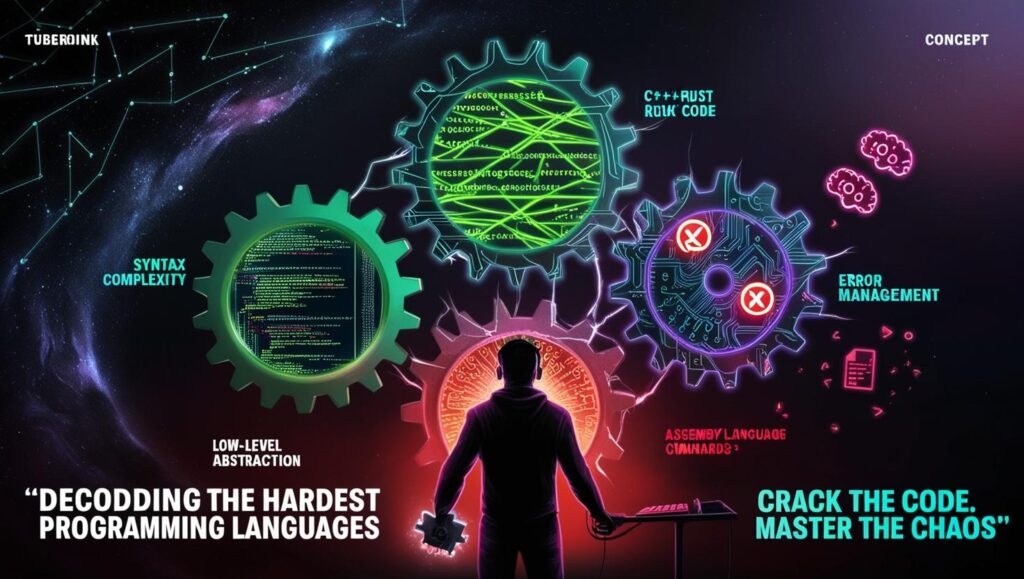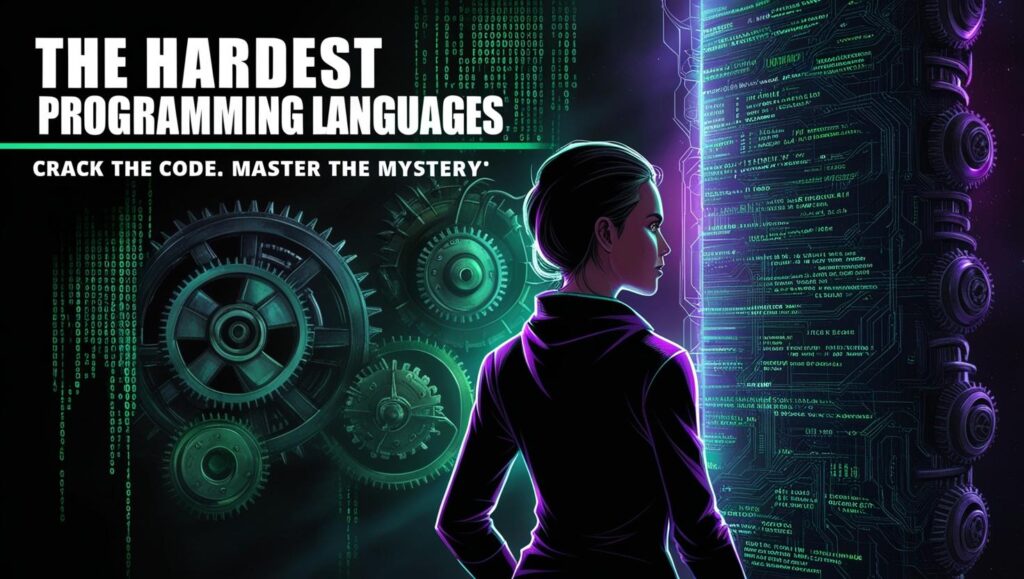In the vast and ever-evolving realm of programming, you may find yourself confronted by languages that challenge even the most seasoned developers. The allure of these complex languages lies not only in their intricacy but in the mastery they promise to those who dare to decode their mysteries. As you delve into this article, prepare to uncover the nuances of what many consider the hardest programming language. Whether you are an aspiring coder or an experienced programmer, this exploration will provide you with insights into the language’s enigmatic structure and the unique opportunities it presents for innovation and mastery.
Defining the Hardest Programming Language: What Makes a Language Tough?
Complexity of Syntax
When identifying the hardest programming language, examining the complexity of syntax is critical. Languages with intricate syntax rules can be challenging for developers to master. Such languages may require precise formatting and a comprehensive understanding of their constructs, leading to steep learning curves. For instance, languages known for rigid syntax, such as C++ or Rust, often test programmers’ patience with their rigid structures and nuanced conventions.
Abstraction and Low-Level Operations
Languages that require manual memory management or offer little abstraction from computer architecture are frequently considered among the toughest coding languages. These languages involve direct interactions with hardware, demanding programmers’ deep knowledge of computer science fundamentals. The need to manage resources manually and optimize code for performance adds layers of difficulty, making languages like Assembly renowned for their challenge.
Error Management and Debugging
Another factor contributing to a programming language’s difficulty is its error management and debugging capabilities. Some languages offer comprehensive error messages and extensive debugging tools that simplify the rectification of issues. Conversely, tougher programming languages often provide cryptic error reports and limited diagnostic assistance, compelling developers to rely on sedimentary understanding and problem-solving skills to troubleshoot effectively.
In conclusion, defining the hardest coding language encompasses an amalgamation of these complexities, where syntax intricacy, abstraction levels, and debugging limitations play pivotal roles in elevating the language’s difficulty. Ultimately, the question of which is the hardest programming language is subjective, often depending on an individual’s experience and proficiency in navigating these intricate elements.
A Deep Dive Into the Toughest Coding Languages: From Assembly to Malbolge
Exploring the Complexity of Assembly Language
Assembly language is often cited as one of the hardest programming languages due to its intricate relationship with hardware. It demands a profound understanding of computer architecture, as well as the ability to manipulate memory addresses and processor instructions manually. Unlike high-level languages with human-readable syntax, Assembly operates closer to the machine code, requiring programmers to think in terms of individual bytes and registers as noted in industry insights. This low-level interaction offers significant control over hardware but challenges those unfamiliar with such granular complexity.
The Obfuscation of Malbolge
Topping the list of esoteric programming languages, Malbolge is intentionally designed to be the toughest programming language. The complexity stems from its nearly unfathomable syntax and lack of coherent structure. Born out of a need to create the hardest coding language, Malbolge presents a bewildering array of self-altering code, turning even seasoned developers into novices. Its cryptic notation system renders code almost unreadable, transforming what should be a logical sequence into a nightmarish puzzle highlighted in discussions. For these reasons, Malbolge represents the ultimate test of a programmer’s patience and persistence.
Understanding APL’s Unique Syntax
APL (A Programming Language) is another contender for the toughest programming language, primarily because of its unique character set and multidimensional array handling. It is interpreted right-to-left, a stark contrast to the typical left-to-right reading of most languages, complicating comprehension further as explored in programming communities. This language introduces concepts such as monadic and dyadic functions that challenge even experienced programmers, offering a functional programming style that shifts paradigms completely.
By understanding the complexities of these languages, you gain insights into the profound challenges they introduce, illustrating what truly defines the hardest programming languages in the industry.

Mastering Complexity: Tips for Tackling the Hardest Coding Language
Learning the hardest programming language, whether it’s C++, Rust, or Haskell, begins with understanding the breadth and depth of their complex nature. Successfully navigating these toughest coding languages involves adopting strategic approaches and embracing a persistent learning mindset.
Embrace the Basics and Build a Strong Foundation
Start by familiarizing yourself with the fundamental concepts and syntax of the hardest coding language you choose to tackle. Languages like C++ demand a keen understanding of memory management and object-oriented programming. On the other hand, Rust requires a grasp of its intricate memory ownership rules, while Haskell emphasizes abstract mathematical concepts that often intimidate beginners.
Leverage Real-World Experience
Applying what you learn to real-world projects is crucial for making these abstract concepts tangible. Engage in open-source projects or create your own, allowing you to manage memory in C++ or write concurrent programs in Rust. This boosts your confidence and solidifies your understanding beyond theoretical knowledge. The availability of extensive standard libraries in these languages often provides ample opportunities to apply your skills creatively.
Seek Community Support and Expert Guidance
Surrounding yourself with a supportive network is vital. Join online forums, chat groups, and coding communities where you can seek guidance from experienced programmers and fellow learners. Sharing insights and solutions can often elucidate the hardest aspects of these languages that can feel overwhelming when tackled alone. According to various guides, collaboration and mentorship can significantly ease the learning curve associated with the toughest programming language challenges.
Mastering these formidable languages is a journey, one that requires patience, practical engagement, and a supportive community to transform complexity into proficiency.
Conclusion
In navigating the complexities of the hardest programming language, you embark on a journey that transcends mere coding. Mastery demands perseverance, a keen analytical mind, and an unwavering curiosity to explore the intricacies hidden within its syntax. As you decode its mysteries, you not only enhance your technical prowess but also cultivate a resilience that empowers you to tackle future challenges. This endeavor, while daunting, offers unparalleled rewards, transforming you into a more adept and versatile programmer. Embrace the challenge, and you will find that the lessons learned extend beyond the screen, enriching both your professional and personal growth.



